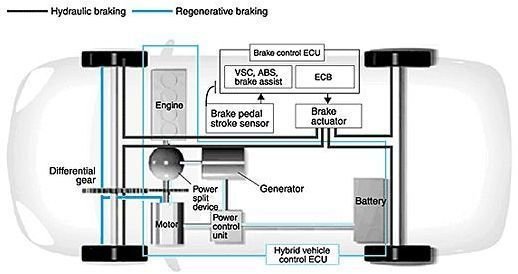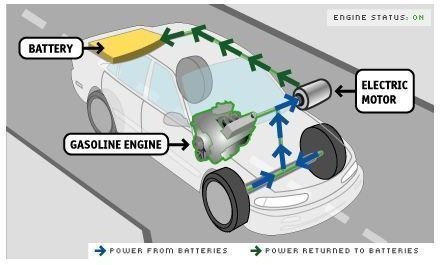Increasing Car's Efficiency : Regenerative Braking Technology
Introduction
Regenerative Braking Technology is an energy recovery system that is used to preserve the energy that is lost during stopping a vehicle. An integral part of almost all the modern hybrid cars, regenerative braking technology saves and stores energy for future use or as back up power.
Understanding Regenerative Braking
When a fast moving vehicle is suddenly stopped using a conventional braking mechanism much of its kinetic energy is wasted in the form of heat. Heat generated during braking is nothing but a frictional effect created by the braking system to counteract the motion of the moving vehicle. It is a proven fact that when braking pads rub hard against a brake disc or drum, approximately thirty percent of the energy generated by the vehicle is lost in the form of frictional heat. This means that if more friction is generated, more energy is required by the engine to compensate for the energy lost. This phenomenon in the long run leads to a reduction in engine efficiency and mileage.
How Regenerative Braking Systems Work
Though many hybrid automobiles still use conventional braking system there are many makers who have understood the full benefits of regenerative braking system and have started using it in their cars.
The regenerative braking system consists of electric motors that help the automobile to brake and move easily. However, the mechanism of application is the same. When the driver applies the brakes using the conventional pedals, the electric motor starts moving in the opposite direction. This means that the electric motor now starts working as a generator. The reversal motion of the motor creates a torque that counteracts the motion of the vehicle by transferring the braking energy into an electrical load, which eventually stops the vehicle. But the regenerative technology not just stops the vehicle but also does one more important job – it preserves otherwise wasted energy.
The regenerative braking system makes the best out of the motor-generator system. As both the devices, use the same technology and configuration of magnetic field with a coiled wire rotating inside it, it is easy to use them alternatively. This means that whenever the brakes are pressed in a hybrid car, the motor starts rotating in the opposite direction and acts as a generator. The generated energy is then stored in a bank of chemical batteries to be used later or in subsequent acceleration.
However, it is to note that a regenerative braking device is not able to utilize all the energy that is lost through friction. A part of the wasted energy still goes un-utilized, but a regenerative braking system definitely improves the overall engine efficiency.

